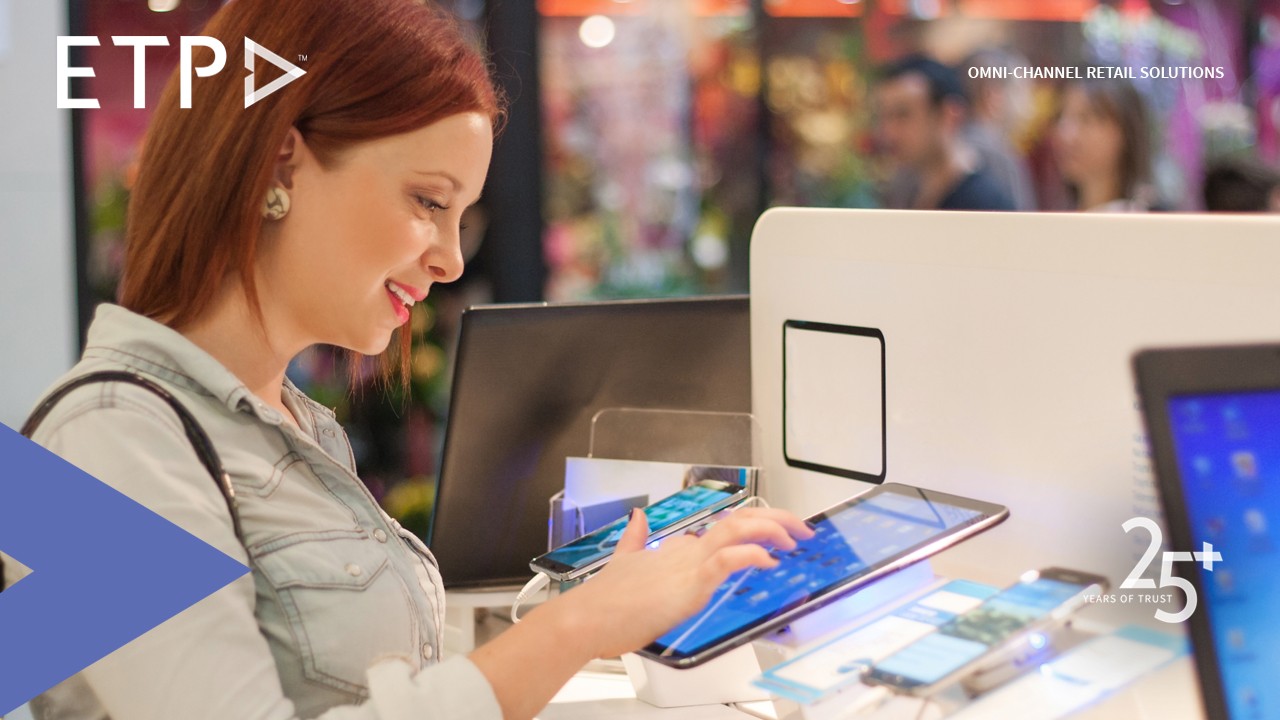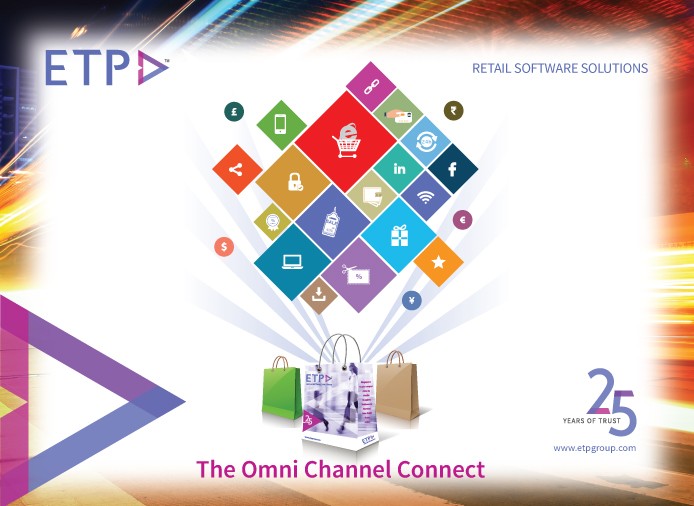
Tag: Omni-channel retail technology
Omni-channel Success: Bridging gap between customer expectations and omni-channel retail execution

New age shoppers are connected, digitally savvy, always-on and at will, switch between channels while shopping. They expect retail brands to understand them better. After all, they are well aware that retailers these days are capable of capturing data – from customer details to how, when, what and where they make their purchases, and also what they are researching online. In other words, customers know that retailers can use the data to formulate an idea of their interests and motivators for purchase. As a result, customersâ expectations have gone beyond mere transactions. However, retailers today are falling short when it comes to satisfying consumer expectations for personalized, relevant shopping experiences.
While 69% of companies said they offer a superior online experience, 51% customers left a company that failed them online. Further, 81% companies said that they have or are close to having a holistic view of their customers, only 37% of consumers agreed to the fact that their preferred retail brand actually understands them. These statistics clearly highlight the gap between customer expectations and retail businessesâ understanding and execution.
How can retailers start to offer a seamless customer experience across channels and rise above the customer expectations?
In order to successfully implement seamless and personalized omni-channel shopping experiences, retailers require a single 360 degree view of their customer. Simply put, retailers need to have comprehensive information about their customers â their details, buying behavior, preferred channels, and so on. Not only this, the data should be handy with retail organizations to proactively plan and implement relevant offers and communications. This is possible only when the brand becomes truly customer-centric and leverages the information gathered to understand their omni-channel customer better.
By investing in the right omni-channel retail technology, retail businesses and brands have abundant opportunities to know their customers and engage with them, no matter which channel the customers prefer.
Emerging Retail Trends In Southeast Asia

The retail markets of Southeast Asia today offer a range of opportunities, depending on investor appetite for risk and maturity. Favourable demographics including a young earning population and the regionâs high tourism potential contributes to rapidly growing economies and mature retail markets that in turn lead to the creation of new shopping venues of all shapes and sizes. In the coming years, as the region’s consumers become more affluent and its cities expand, following are the top retail trends in Southeast Asia:
Personalization
Consumers today expect quick and personalized customer service. They expect retailers to deliver a wider range of products, faster, through meaningful and targeted mediums. Omni-channel retail technology allows retailers to know exactly where their inventory is, to whom they can make it available and when it will get there, regardless of which channel is calling for it. This helps retailers to offer the best level of service to their customers.
Integrated back-and front-end systems
Retailers in Southeast Asia will continue to focus on ensuring their back-end supply chain operations are fully optimized and streamlined and are aligned and synchronized with their store/online operations and associated front-end systems. This will help improve product availability and order accuracy, reduce fulfilment costs, and improve service levels.
Fast and flexible fulfilment
Few retailers in Southeast Asia are currently offering next day delivery to customers, two-hour click-and-collect, or ship-from-store services. For this to be possible, retailers need to have a 360 view of their channels and maintain accurate demand planning. Omni-channel retailers with this level of insight into their inventory and customers will seamlessly control product, people and processes to dispatch and fulfil orders quickly and profitably.
Social shopping
The increased use of instant messaging platforms and m-commerce in Southeast Asian countries will see more shoppers embracing social shopping. The next development will involve retailers using social channels to take customer orders. The retailers who succeed in this difficult market will probably be those who see social media as a viable retail platform.
Hyper targeting
Big data analytics in retail has advanced immensely, making it possible to track customer transactions, online conversations and shopping habits in real-time. Through this, brands can understand better how to service their customers and engage them sustainably.
The Omni Channel Connect
Your omni channel presence, and not just your product, makes or breaks your brand image today. Market reports estimate online and web-influenced retail sales (US) to reach $1.8 trillion by 2017, showing sustainable growth from the $1.3 trillion mark in 2013.
The Omni channel adoption and conversion will continue to grow as customers embrace emerging technology and its multiple access points. These same customers will expect even faster response time, regardless of how and when they connect with your store. The emergent âshow roomingâ trend also shows us that consumers still wish to âgo out shoppingâ and value quality brand experience within the retail store. The only difference is that the retail store needs to shed its physical limitations and further contact, communicate, engage and convert customers across multiple channels, as per their convenience. This strategy hits the mark in terms of keeping customers happy, increasing acquisition volumes and reaching closer to the projected business growth. For example, large brick and mortar retailers like Macyâs and Best Buy are adopting omni-channel technology to stay connected and relevant to their growing customer base. Macyâs encourages shoppers to scan products via the retailerâs mobile app while shopping in the stores. Its annual digital plan focuses heavily on mobile and seeks to âclose the gap between store, desktop and mobile.â After Best Buy lost $1.2 billion during 2012, the worldâs largest consumer electronics retailer looked like it was headed towards oblivion. Its turnaround happened post the decision to invest in omni-channel innovations that reached customers wherever they areâin a store, online or via their phonesâand use technology to turn costly physical stores into an advantage.

The advantages of Omni channel are many but the most prominent of the same are as follows:
Brand Connect â Technology has intertwined with our lives and formed the core of how we relate to things and people, including brands. Most of us are always online and âconnectedâ through smart mobile devices. According to Forrester Research, mobile payments will amount to nearly $90 billion in the coming years. This is largely due to the fact that an impactful omni presence will help brands capture the most coveted real estate in retail â the customerâs mind. According to global reports, mobile phone penetration will rise up to 69.4% of the global population, in 2017. As smartphones and tablets continue to become cheaper and 3G and 4G networks more approachable with enhanced security, mobile wallets and captivating additions like wearable technology and new age applications etc. the hyper speed upward trajectory of m-commerce shall remain on track.
Social Network â The above point lends itself to the social network invasion. When brands create an engaging niche for themselves in the popular social networks, they gain much more than possible customer conversions. This platform has become a dialogue center between companies or brands and the enormous and growing number of people on the network. Companies are exposed to real-time problems, perceptions and potential of their products, programs and services. This is invaluable first-hand data that not only bolsters their databanks but also helps retailers with insights unblemished by process churns. The right steps undertaken thus to create a better brand experience shall result in favorable reviews and improved brand equity. Positive word-of-mouth will also lead to desired revenue generation and customer loyalty.
Target Marketing â Omni channel marketing allows highly targeted approach towards introducing brand products, services and company USPs, inducing interest to understand and then buy or recognize the same. Business Intelligence and integrated CRM technology provides retailers the information regarding customers and prospects preferences, needs and desires. Analytical computing takes into consideration various factors like socio-economic and demographical components to fine-tune the learnings. Now that you have the âwhatâ, Omni channel paves the next step with the âhowâ at this juncture. How do we personalize our offerings through the marketing channels most frequented to encourage or incite positive buying behavior? This customized experience is becoming the norm in both B2B and B2C enterprises where the marketing strategies are created to implant a familiar and relationship based communication with customers, prospect and suspects.
The crystal ball shows Omni-channel technology to carry on putting enterprises on the map and level the global playing field of retail.

